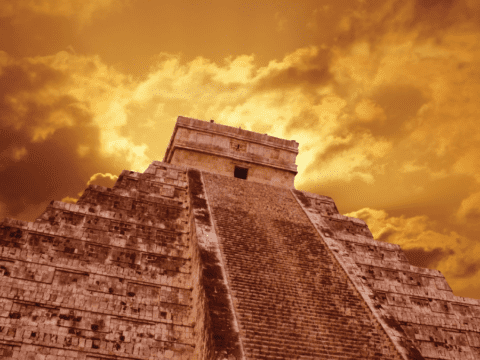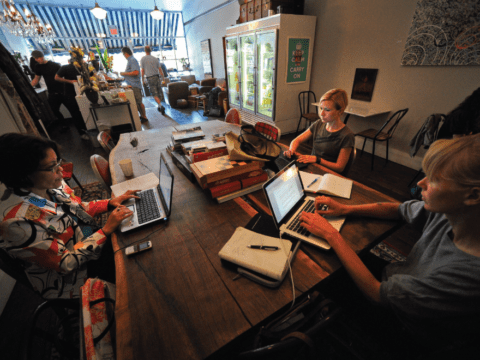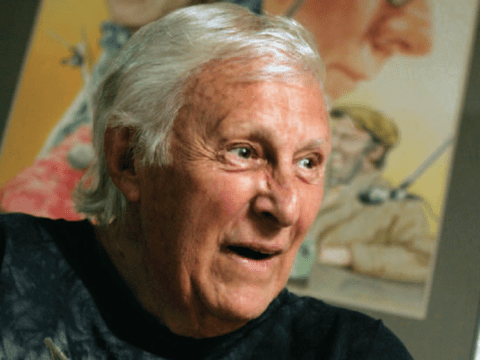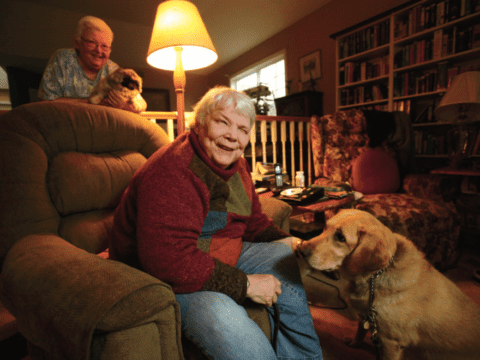Sometime in the middle of 2007, somebody somewhere engaged in a simple act that changed the world forever. They left the countryside and moved to a city. In so doing, that person tipped over the 50th percentile; for the first time in human history, the globe became more urban than rural. And it is destined to stay that way.
The tipping point could have been any one of a host of people. Maybe it was five-year-old Carla moving with her father from the hills of Veracruz into Mexico City; or a young African departing his ancestral village for Lagos, Nigeria; a Cree woman leaving northern Saskatchewan for Regina; or a fellow packing up from an Ontario farm to move to Toronto as I did 40 years ago. Whoever it was, the driving impetus was likely identical: a pursuit of hope.
“People move to cities for one thing only,” says Jose Castillo, an architect and urban planner from Mexico City, one of the biggest cities in the world. “They are following their idea of a better life.”
In 1900, less than 10 percent of humans lived in cities. The London School of Economics’ Endless City Project predicts that by 2050 it will be 75 percent. If you factor in the expected world population growth, that’s 6.7 billion people — more than the Earth’s total population today. The implications, no matter how you look at them, are staggering. If you are a planner or a politician, how can you adequately cope with such an onslaught? For all those who care deeply about both justice and the quality of life, how on earth do we engineer forms of social and economic organization, such as housing and services, that are adequate? How is it possible to make it environmentally sustainable, socially fulfilling, fair?
Here is a second set of questions: What separates the cities that will work from those that get overwhelmed? How do you make a city successful? And finally, is there such a thing as just too big?
The current urbanization phenomenon is taking place predominantly in the developing world. Canada crossed the threshold to become more urban than rural in 1914. By 1950, the globe possessed two mega-cities with 10 million or more inhabitants: New York and London. Today there are 20 — and 17 of them are in the developing world. Tokyo, with 28 million people, is the world’s biggest city. New York now ranks fifth at 18 million. The rest of the top five include Mumbai, India; Sao Paolo, Brazil; and Shanghai, China. And their growth is boggling. Every day, 300 families migrate to Mumbai; every hour, 58 new people arrive in Lagos.
TO GET THE FEEL OF A REALLY big urban agglomeration, I went to Mexico City. Officially 18.5 million and still growing, Mexico City’s population was seven times larger in 2005 than it was in 1950. According to the United Nations, among the six most populous mega-cities in the world, three (Mumbai, Delhi and Mexico City) had annual population growth rates in 2005 above 2.4 percent.
But rather than being completely frightening, Mexico City stands as a model of how a really large city can get by. Its site, in a bowl 2,000 metres above sea level surrounded by mountains, was urban well before the arrival of the Europeans. The Spanish, arriving in 1519, found Tenochtitlan, a city of pyramids, canals and 200,000 people (recently conquered by the Aztecs, who in turn fell to the Spaniards) dating back to the first century BCE. After Mexican independence, the capital, with its concentration of political, economic, cultural and intellectual power, became a magnet for the whole country.
At a sidewalk café near the historic centre of the city, I join Arturo Ortiz, who teaches urban development at the Universidad Iberoamericana. People stroll by with their friends and children. Car traffic is busy but not heavy. Two police officers — dressed like generals, though the impression is instantly muted by the fact that they are riding on two- wheeled scooter-type Segways — roll by. There are trees and lots of green. “In Mexico City, you never feel like you are in a city of 18 million,” Ortiz observes.
He is right. Like London, a huge city made up of a vast collection of villages, Mexico City is an endless series of neighbourhoods, and that, for its inhabitants, seems to save it. “A city as big as Mexico is impossible to imagine, but not impossible to function,” Ortiz tells me.
Twenty-four years ago, Time Magazine labelled Mexico City “a disaster in progress.” In the 20th century, its population had doubled every 10 years; during the 1970s, 1,500 migrants flooded in each day. At those rates, the population was expected to triple to 36 million by today. City services were overwhelmed, terrible air quality sent people to hospital. Planning and zoning were a fiasco. But Mexico City didn’t explode. Immigration from the countryside tailed off. The birthrate dropped from an average of 4.26 per family to 2.06 — something that is, in fact, consistent with urbanization, as large families are no longer needed to work in the fields.
Today, Mexico City is still a very big city with huge matters to cope with, such as 12,000 tons of fresh rubbish delivered daily to the Bordo Poniente landfill. But on the ground — at least, in the centrally planned middle of the city — it seems to work. Air quality, for example, improved almost instantly when the government mandated a cleaner brand of gasoline.
IF YOU GO TO MEXICO CITY’S PERIPHERY, however, things are considerably different. One day during my trip, I decide to venture as far east as the metro will take me. The trains here are fast, frequent, quiet, clean and cheap — you can get anywhere in Mexico City for 20 cents. I travel for an hour and a half on two different trains, while standing up in the crush of passengers for all but the last 15 minutes. The trip, though crowded and hot, is entertaining. Hawkers work the cars incessantly, selling everything from children’s books to pirated music CDs.
Finally, in the extreme northeast corner of the city, I reach the end of the line. The last part of the journey is above ground, revealing the endless sprawl of concrete block buildings, everything dusty and sunburnt. Houses, shops, auto repair garages, fruit stands, launderers and computer sales outlets are mixed together as if dropped from outer space. Everything looks completely different than it does in the city centre I had left a couple of hours earlier. There is no evidence of imposed order, no great town squares or parks or monuments, just endless cinder block, narrow streets and people. In the hills, visible just beyond, settlement continues to eat away, new construction climbing ever higher.
I find a market area, a gathering of stalls with vendors selling produce as well as meals of cooked rice and beans. There, I encounter Balthasar, dressed in a makeshift costume, performing traditional Indian dances while his daughter, Carla, holds out her hat for coins. “Where are you from?” I ask him. “Veracruz, from the hills.” He happily accepts the few pesos I give him. It is hard to make a living in the countryside, Balthasar tells me, though he has found that it is also hard to make a living in the city.
Mexico City has perpetually expanded faster than its officialdom could handle. While the government laid out vast boulevards, civic services, parks, monuments and a world-class subway system in the city’s centre, at its edges have sprung up vast “illegal” settlements housing masses of people. Today, these ciudad perdidas (literally, “cities of the lost”) are home to millions of Mexicans, including Balthasar and Carla. They are haphazard, under-serviced, chaotic and, by and large, poor.
Jose Castillo explains how the illegal settlements came about. “Starting in the late 1940s, poor people — mostly from the countryside — just built their houses. The land was of dubious ownership, and though sometimes a settlement would be bulldozed, they basically just stayed.” Thousands of simple concrete block houses would go up in the space of a few weeks, as they still do today. Castillo lays out an urban map. Spreading like viruses on all its edges are orange splotches representing the illegal or informal areas. How does the government react to these? I ask. Does it oppose them? “Not entirely,” he says. “For the government, these form an ad hoc housing policy, much less expensive than having to provide proper housing for that many people.” But in giving up strict control over development, they paid a price. One of the casualties of Mexico City’s “informal” expansion is the city’s southern forest, an environmentally sensitive area designated for protection by a previous mayor. Now settlers are inundating it.
ABOUT A BILLION PEOPLE, almost half the developing world’s urban population, according to the United Nations Human Settlements Program (UNHSP), live in slums. They are on their own to scrabble together some housing. They are on their own to scrounge some kind of livelihood to feed their children. Formal organization is absent, as is government.
The UNHSP’s 2003 report declares, “The urban poor are trapped in an informal and illegal world, in slums that are not reflected on maps, where waste is not collected, where taxes are not paid and where public services are not provided. Officially, they do not exist.” In Nairobi, Kenya, three enormous shantytowns occupy 5.8 percent of the land area but house 55 percent of the people. Though the shantytown dwellers represent more than half of the city’s population, the official government barely acknowledges them.
We might well put this down to indifference, even callousness. But the reality of overpopulation and rapid urbanization speaks also to a desperate crunch of resources. The classical planners who think about dedicated land use, zoning that separates residential and industrial, commercial and public spaces, infrastructure such as streets, water, sewers, parks, schools, a mix of public transit and private cars, bicycle lanes, noise standards, and adequate police and fire services find themselves completely overwhelmed.
In too many places around the world, an informal system of land development and human habitation operates outside of, if not directly counter to, planning controls and central management. At its worst, “informal” means utterly devoid of either control or planning. But even in less extreme cases, urban sociologists note that the authorities simply can’t oversee or control large parts of the economy, housing, services and land-use planning. The informal world that results is spontaneous and insecure.
Some theorists, perhaps to compensate, respond with a kind of creative revisionism. Dutch architect and urban theorist Rem Koolhaas studied Lagos, which has exploded from almost nothing in colonial times to 13 million heading for 24 million. By all reasonable accounts, Lagos is a city in total chaos, but Koolhaas enthuses, “What is now fascinating is how, with some level of self-organization, there is a strange combination of extreme underdevelopment and development. And what particularly amazes me is how the kinds of infrastructure of modernity in the city trigger off all sorts of unpredictable improvised conditions, so that there is a kind of mutual dependency that I’ve never seen anywhere else.” He labels the vast, burning garbage dump of Lagos “an urban phenomenon.”
You might be forgiven if you choke on this. What Koolhaas is referring to in new urban theory-speak is how creative people can be when survival depends on it — how in the absence of proper markets, hawkers move into streets of congested traffic to sell their wares. Or how in the absence of proper housing, people “creatively” use packing crates and bits of corrugated metal, and presto, they have a house. Or devoid of proper policing, how they form vigilante squads to look after public safety.
My knowledge of Nairobi comes from having made a film in one of its shantytowns, Pumwani Majengo, where thousands of Kenyans live in huts pieced together from whatever they can find — sticks, sheets of cardboard, corrugated metal. Open sewers run alongside these huts, and there’s an almost complete absence of civic services. People like Hawa Chelangat (who was the subject of the film) draw their water from stand-pipes shared by dozens of families; the police enter only periodically as heavily armed squads; and the minority of children who make it to school must travel great distances every morning. When she left rural Kenya, Hawa Chelangat believed she might become a secretary. It was not her plan to end up supporting four children by working as a prostitute out of a tin-roofed hut in an overcrowded shantytown. But that is what happened. And since the greater society lacks either the resources or the will to provide Hawa and her family anything more, that’s where they have stayed.
In the end, one is inclined to agree with George Packer, who observes in the New Yorker, “As a picture of the urban future, Lagos is fascinating only if you’re able to leave it. After just a few days in the city’s slums, it’s hard to maintain Koolhaas’s intellectual excitement. What he calls self-organization is simply collective adaptation to extreme hardship.”
ALL OF THIS MIGHT SEEM A GREAT distance from the spaces and safety of Canada. But the continuing growth of the world’s population and the even more rapid growth of cities produce challenges everywhere. Though Canada has no city anywhere near as big as Mexico City or Lagos, the rapidly expanding edges of Toronto, Vancouver and Calgary also seem to be driven not by planning but by the organic influx of population.
Planning, zoning and services try to stay ahead of growth, but no plan I’m aware of states or predicts how big these Canadian cities might become. Planning, one can’t help but feel, limps along after the fact. It scrambles to keep up with growth and gets caught between the relentless pressures of the human migration on one side, and the limits of resources and time on the other. It’s hard to plan ethically if you’re always playing catch-up.
Meanwhile, people everywhere continue to migrate, chasing their dream that what they are moving to will be better than what they left. In Balthasar’s case, the real dream of his family, he tells me, has been achieved by an older daughter: California. “Maybe someday she will make it, too,” he says, tilting his head toward five-year-old Carla. Meanwhile, the sprawling barrio of Ciudad Neza, on the edge of Mexico City, is home.
***
This story first appeared in The United Church Observer’s November 2008 issue with the title “Sprawl.”















